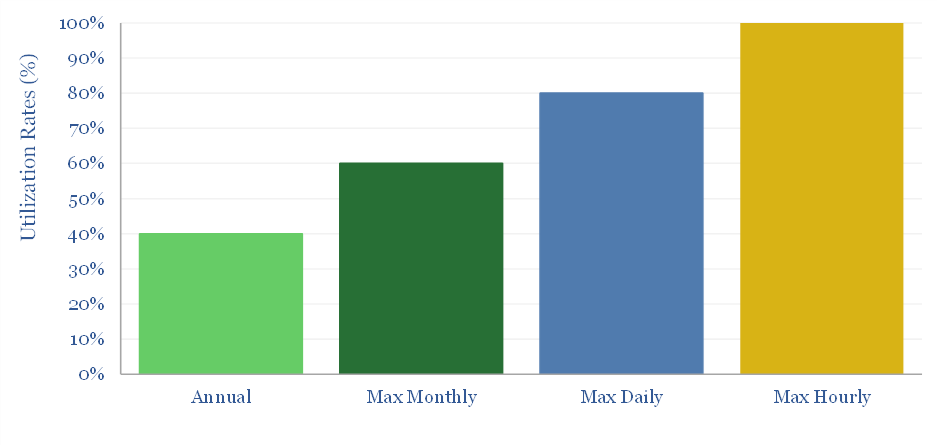The US has >400GW of large gas-fired power plants running at 40% average annual utilization. Could they help power new loads, e.g., 60GW of AI data-centers by 2030? This 5-page note shows why low utilization does not entail spare capacity, and in turn, estimates true gas power spare capacity available for loads such as data-centers.
How much gas power spare capacity exists within the US power grid, and could this help to power the rise of AI or the rise of EVs, without having to construct new power generation?
To answer this question, we have aggregated EIA power market data across 1,850 active US gas-fired power generation facilities.
This 5-page note summarizes our key conclusions on the first page, followed by three pages of follow-up charts.
The note covers the generation capacity growth we are forecasting for AI and other new loads; the average utilization rates of gas generation by plant size (in MW) and by state; why low annual utilization cannot simply be translated into spare capacity; and our estimates for how much true spare capacity really exists within the US’s current fleet of gas turbines.
As a general rule of thumb, a typical US gas power generation facility runs at 40% annual utilization, which translates into 60% peak monthly utilization, 80% peak daily utilization and 100% peak hourly utilization.
This research note is available for TSE written subscription clients, while the underlying data behind our assessment of gas power spare capacity are linked below for TSE full subscription clients.
